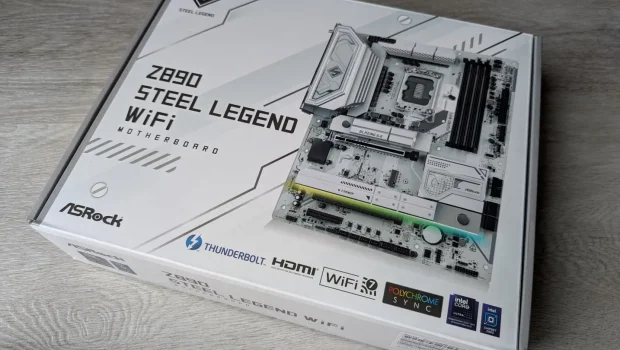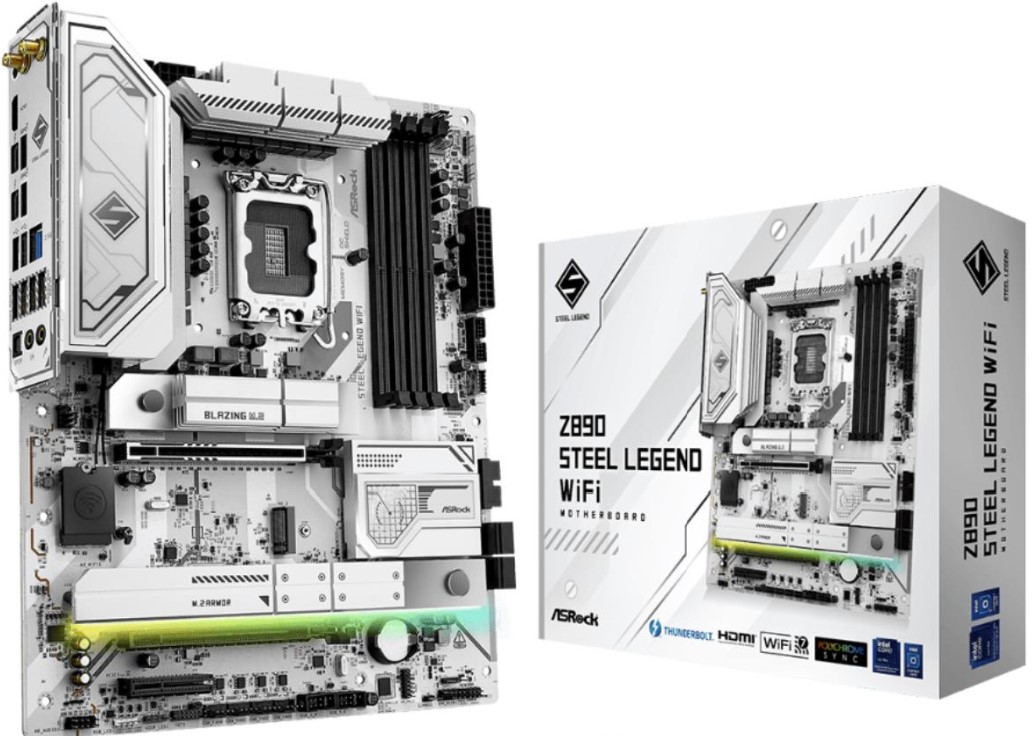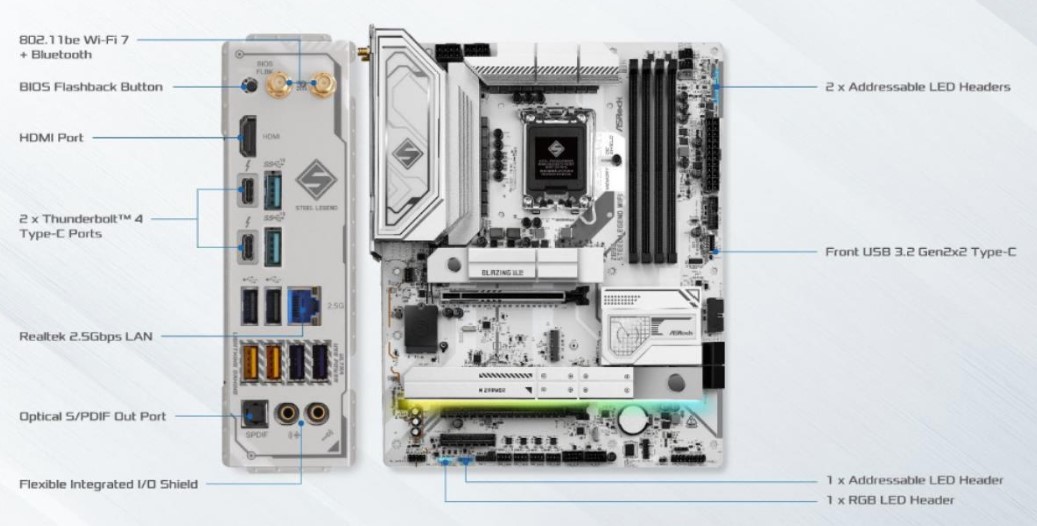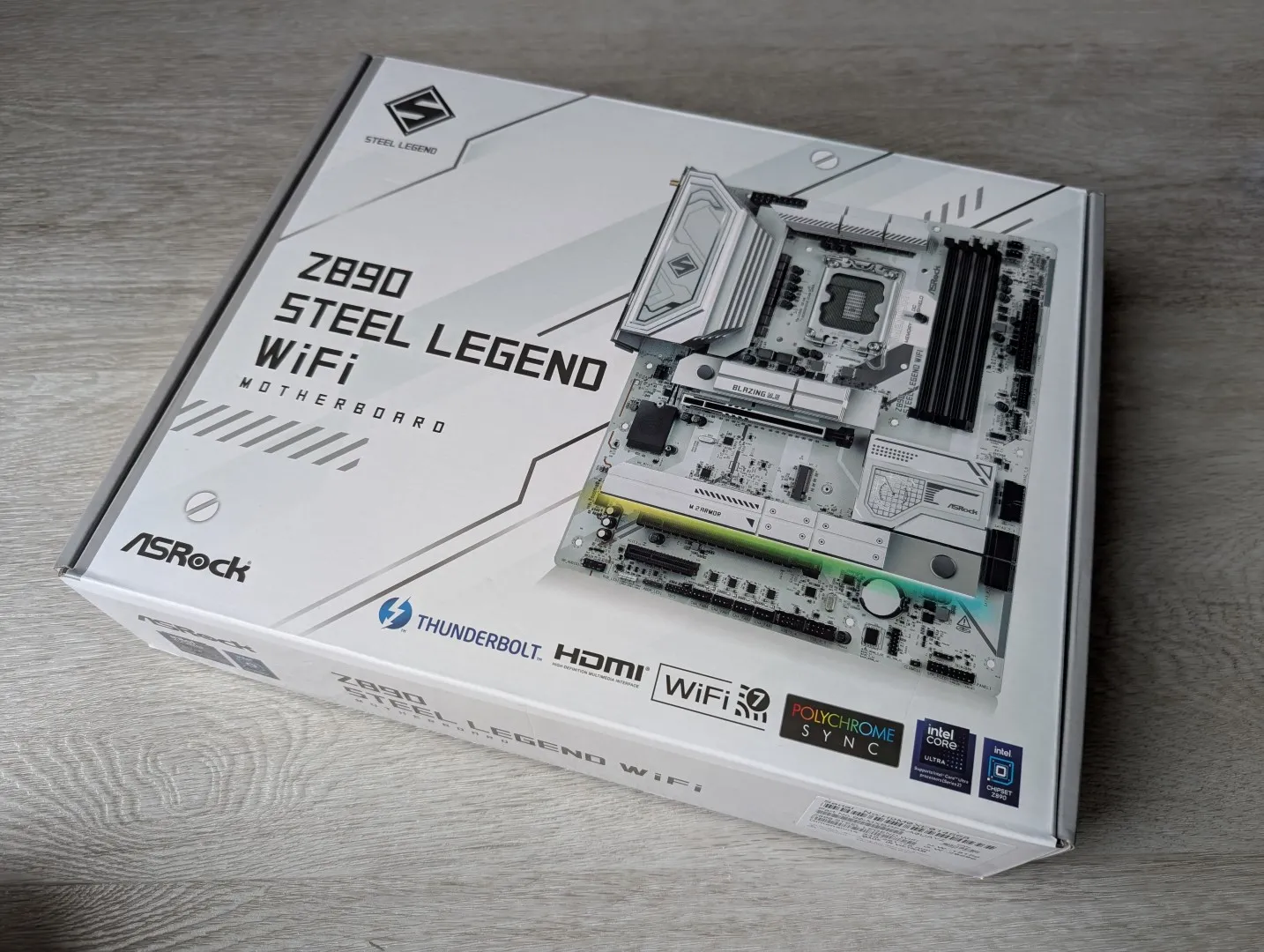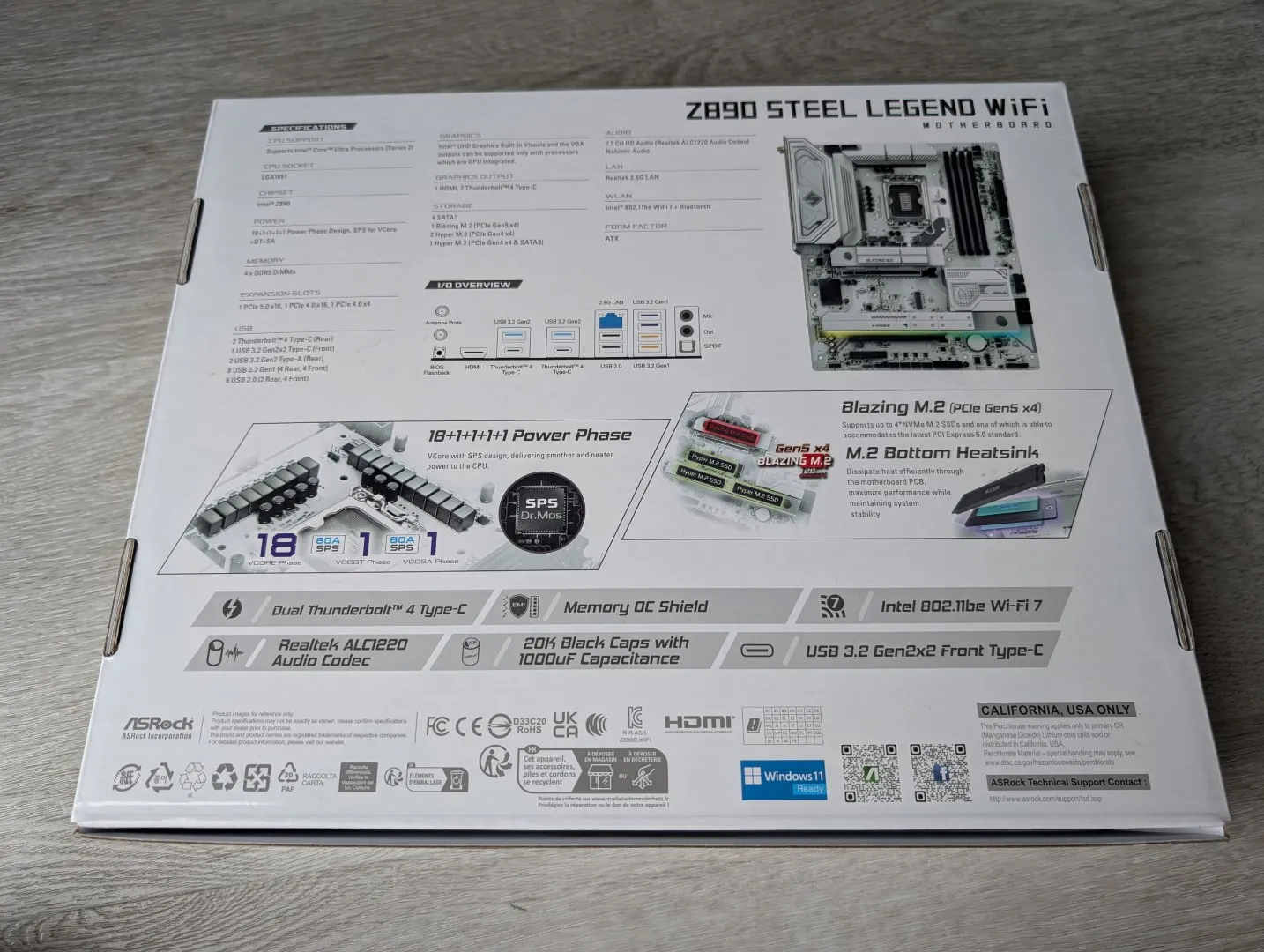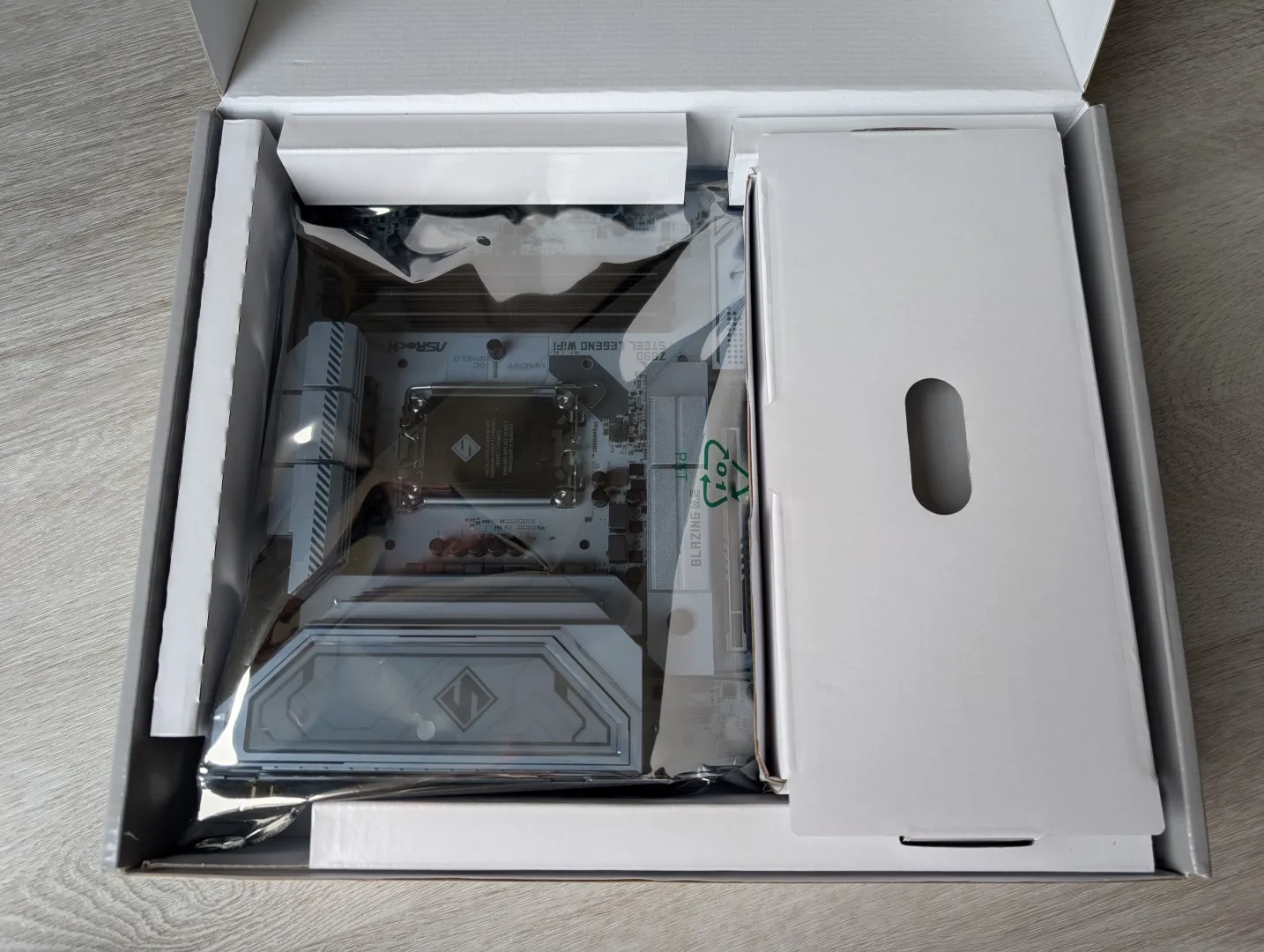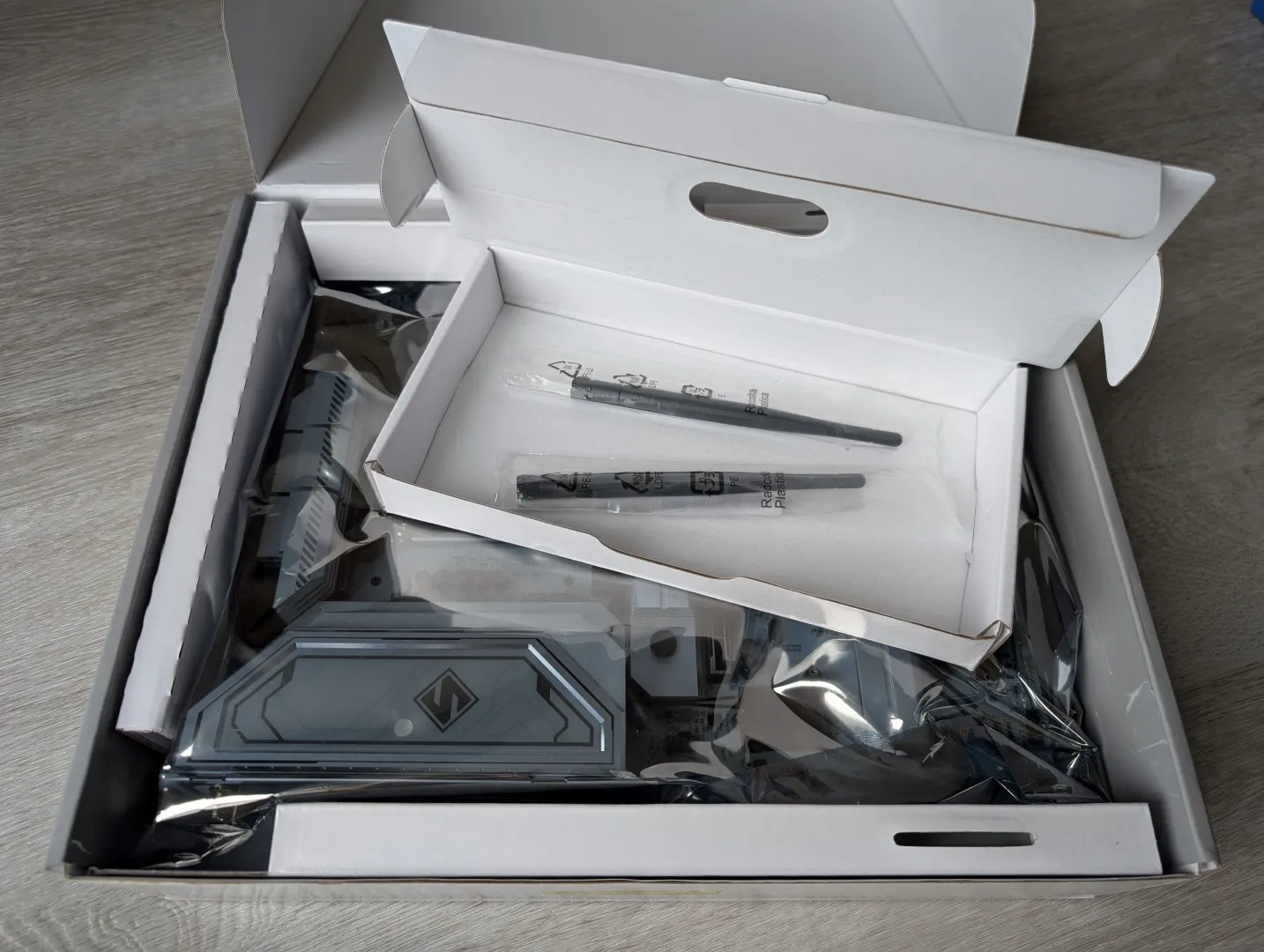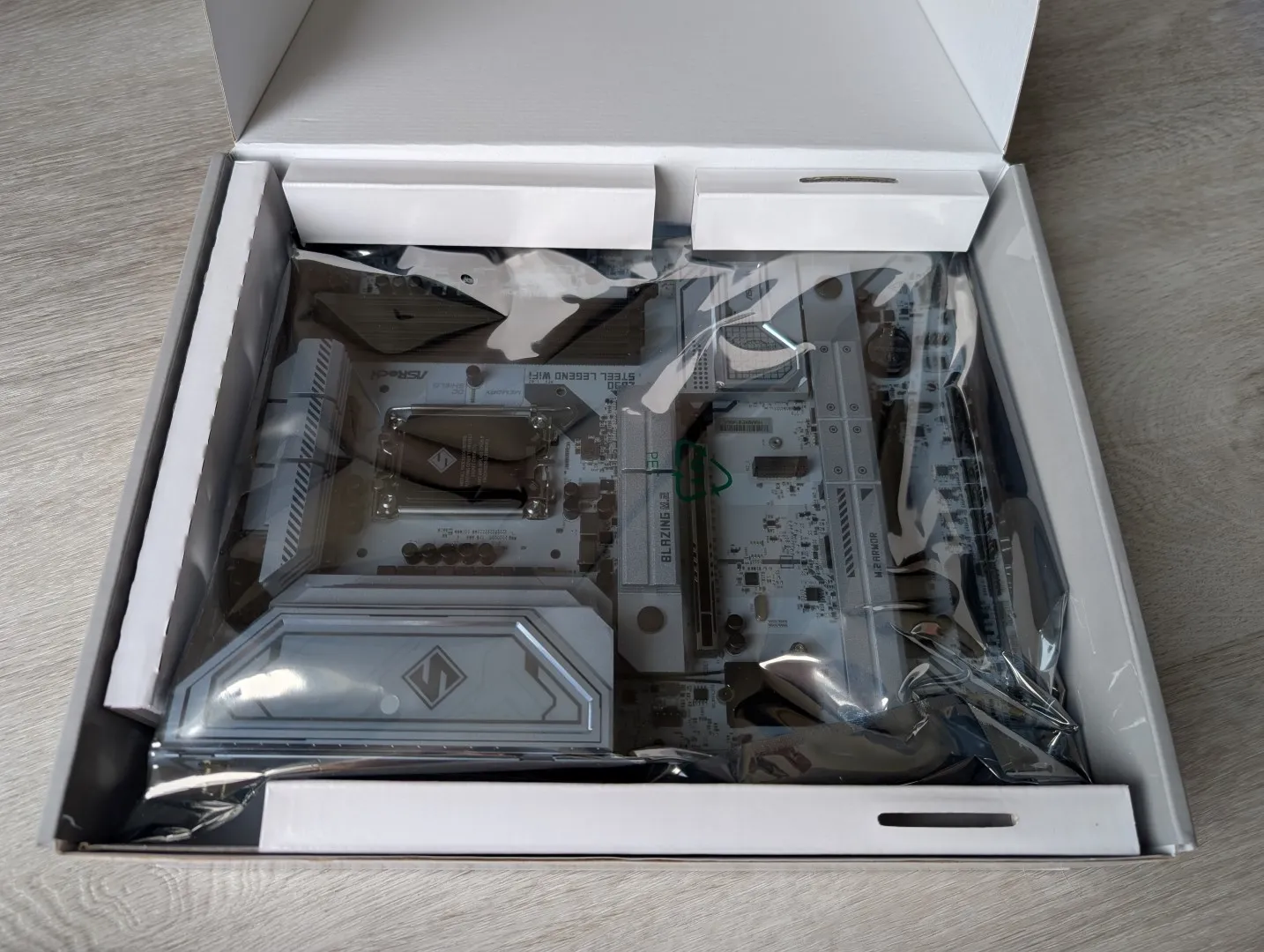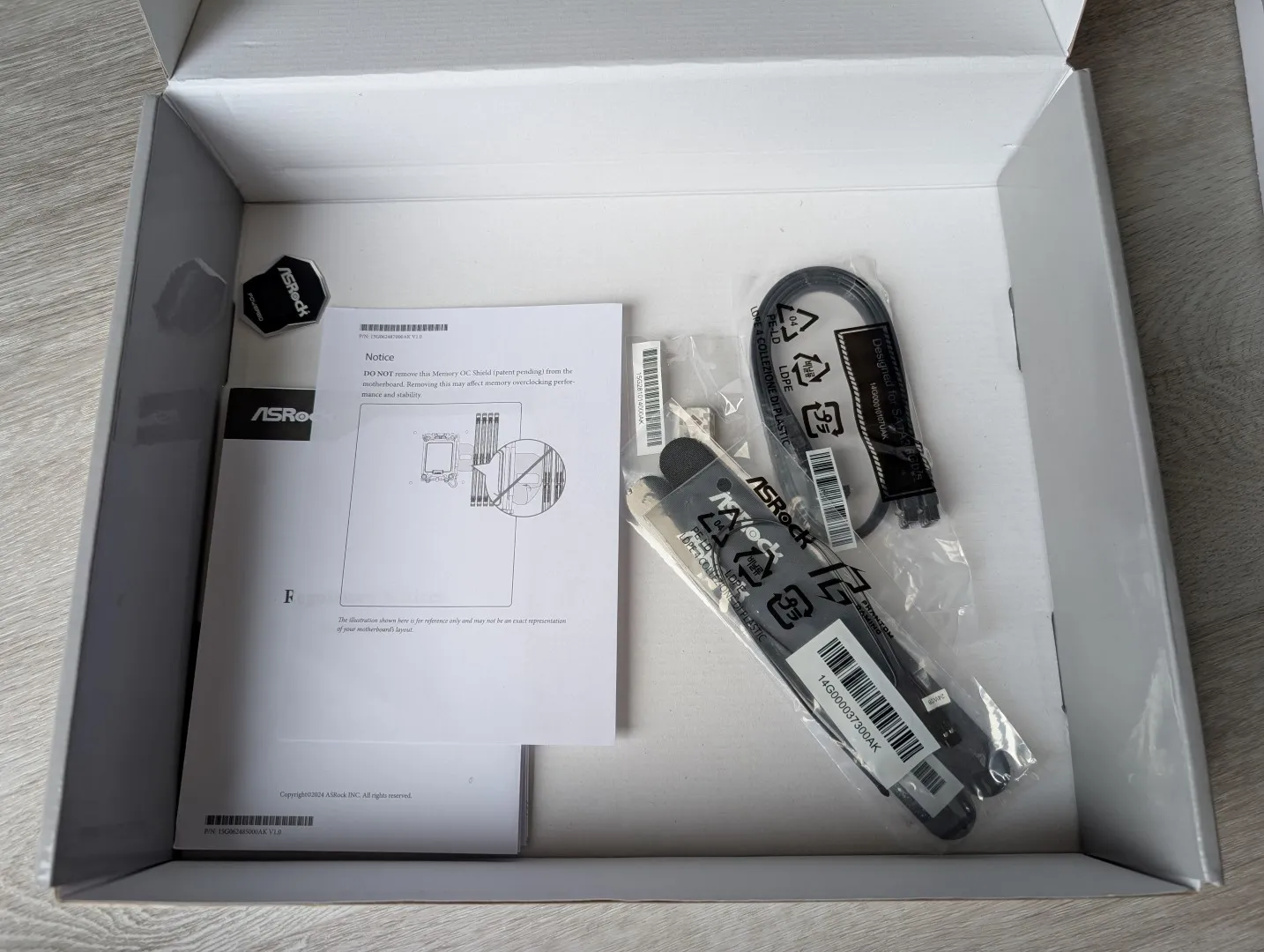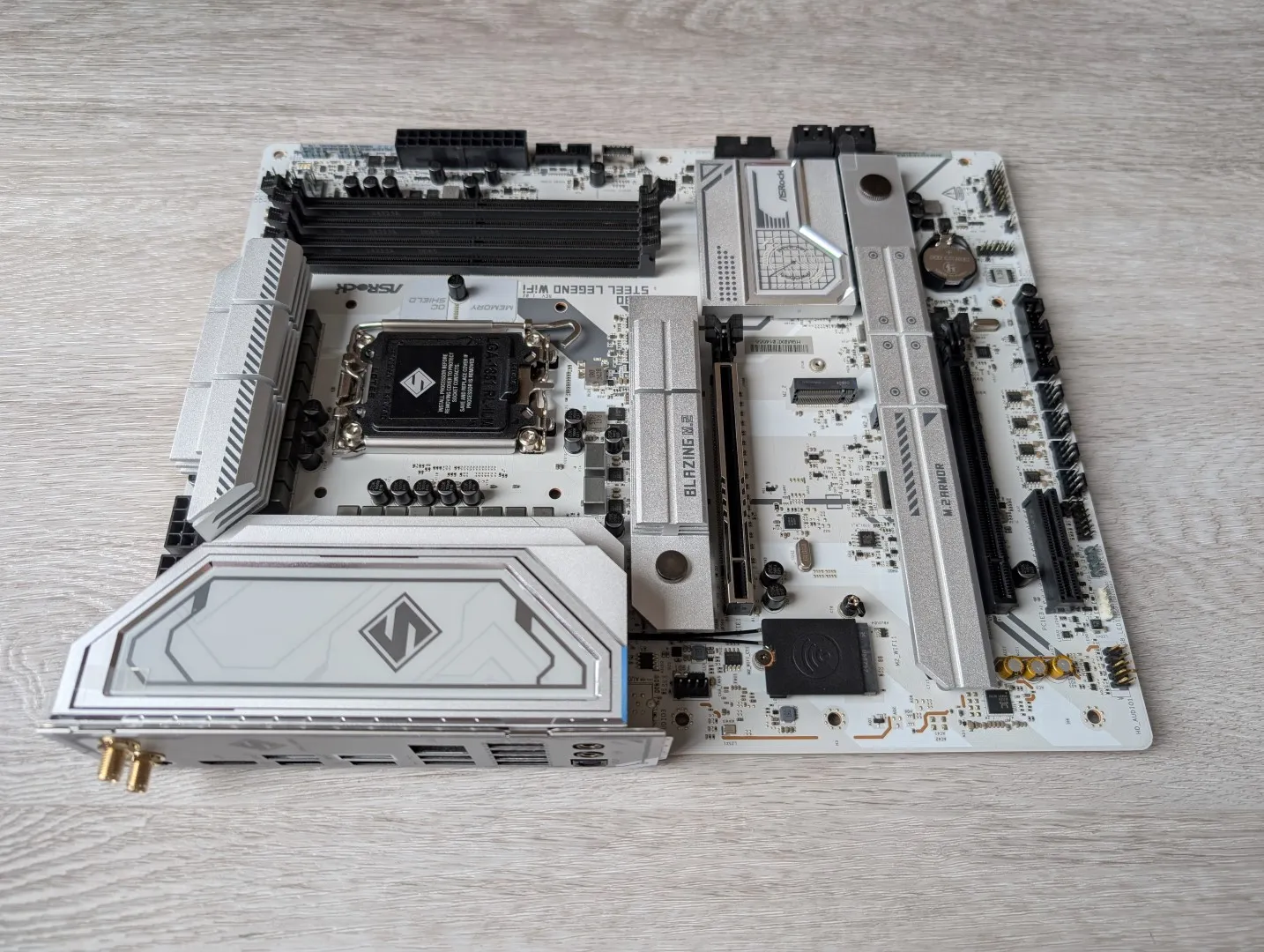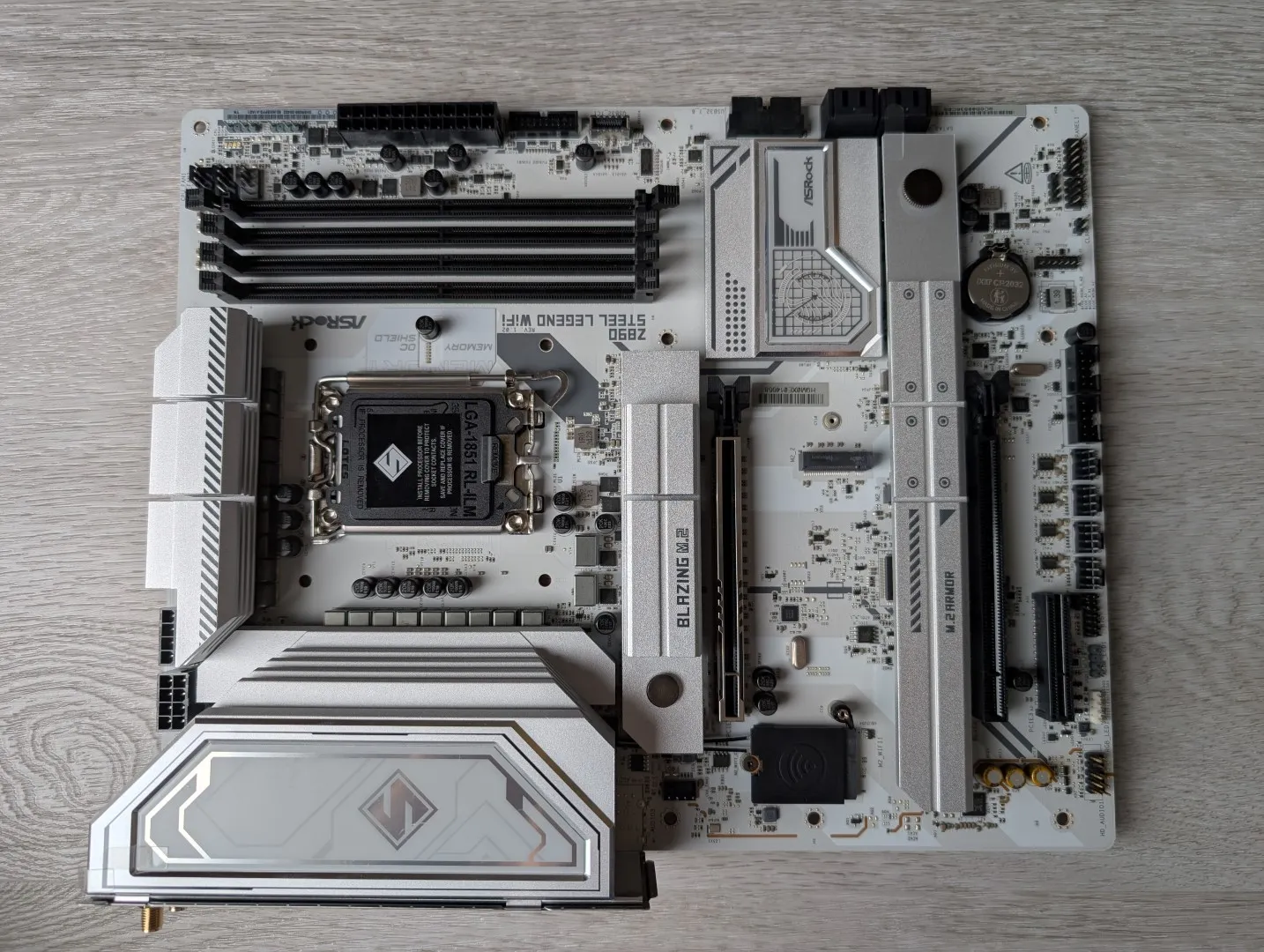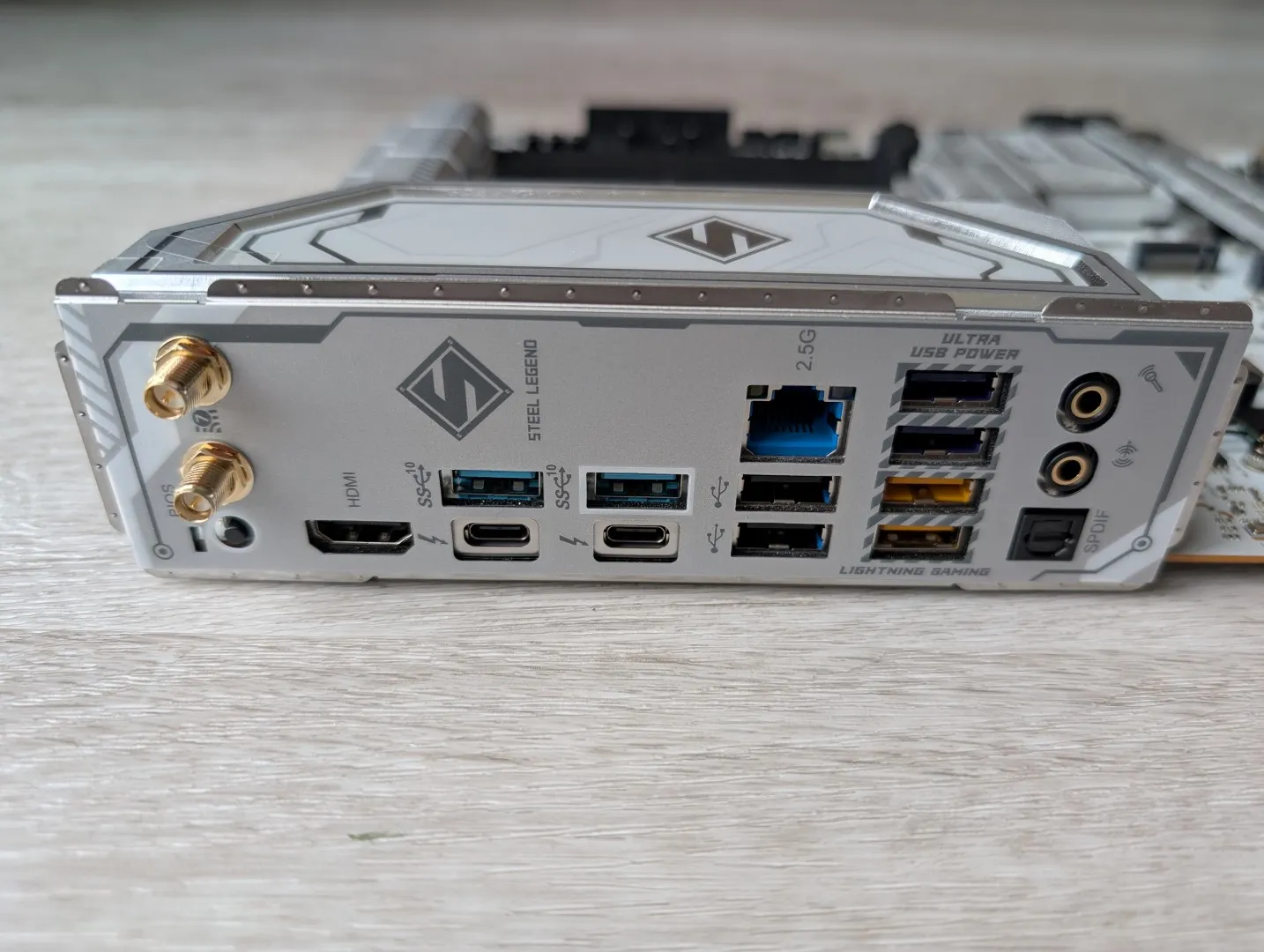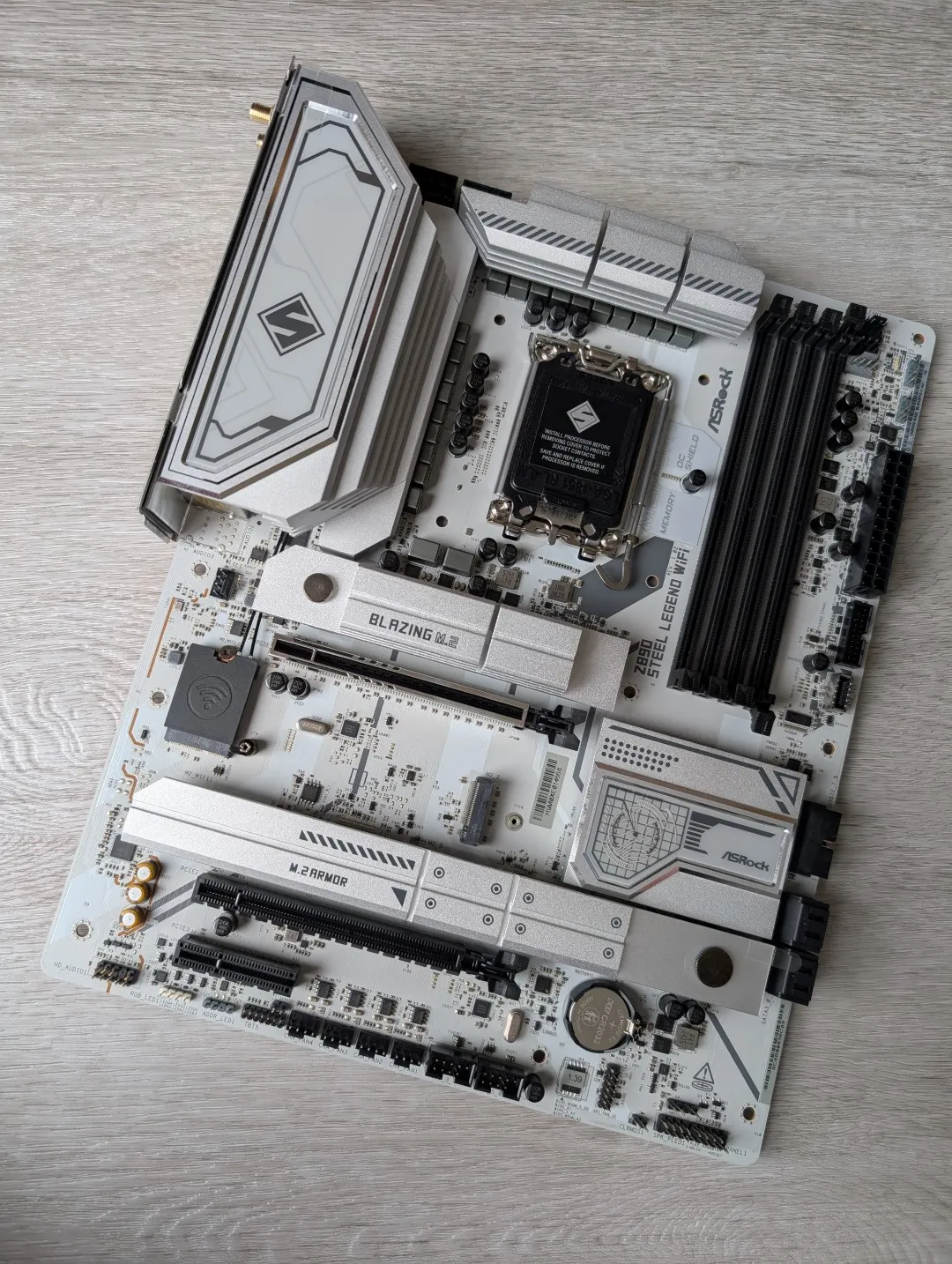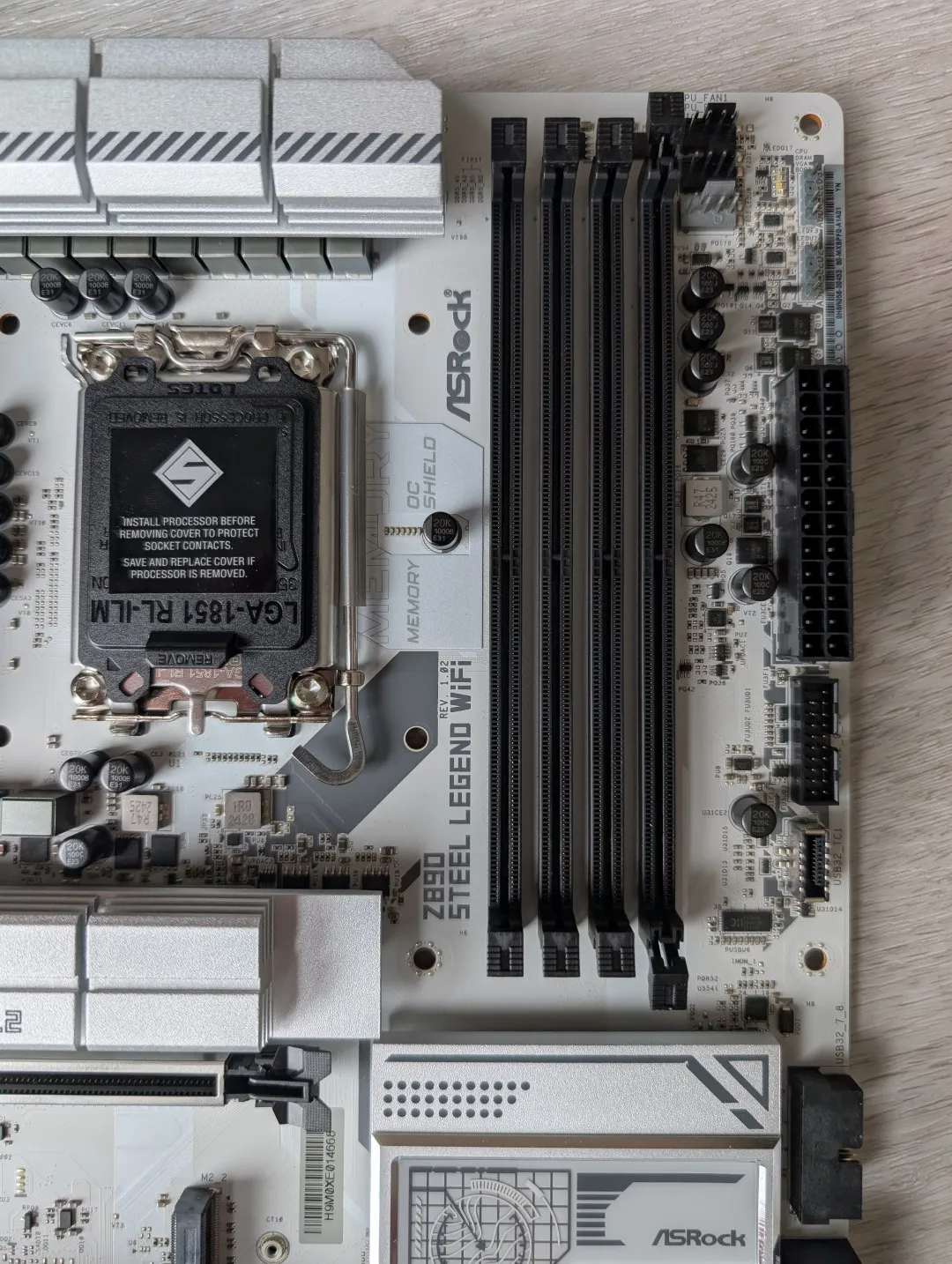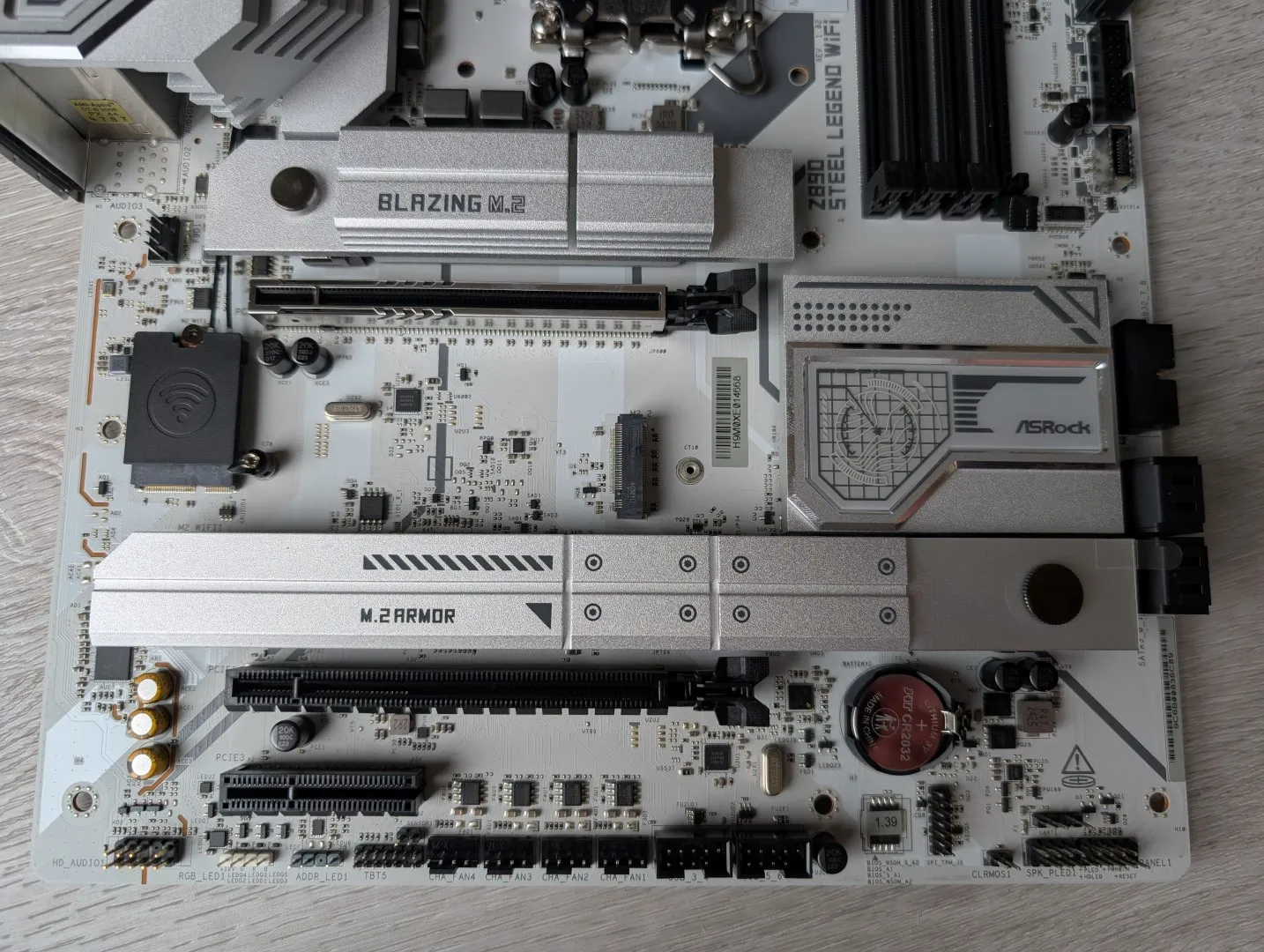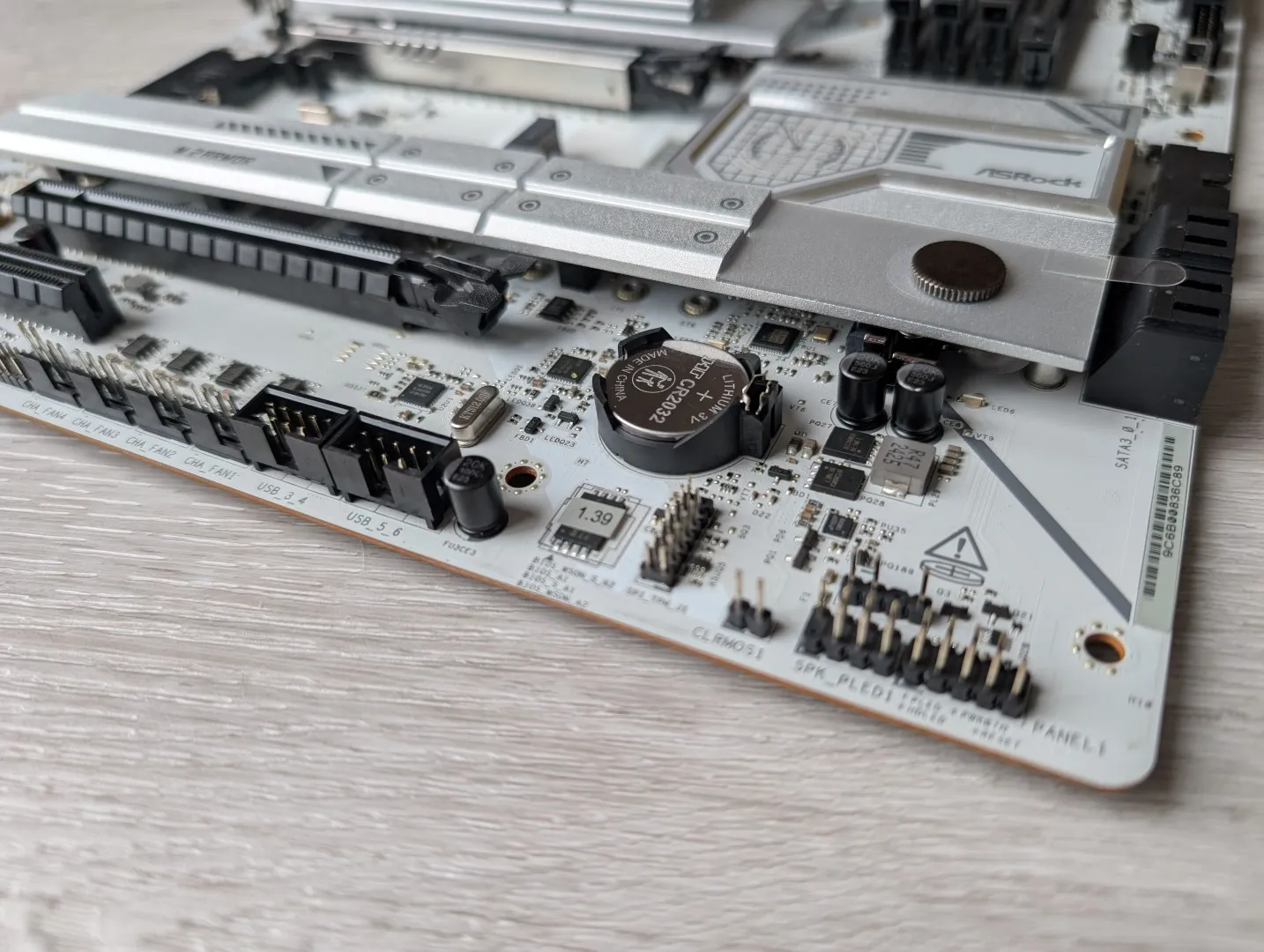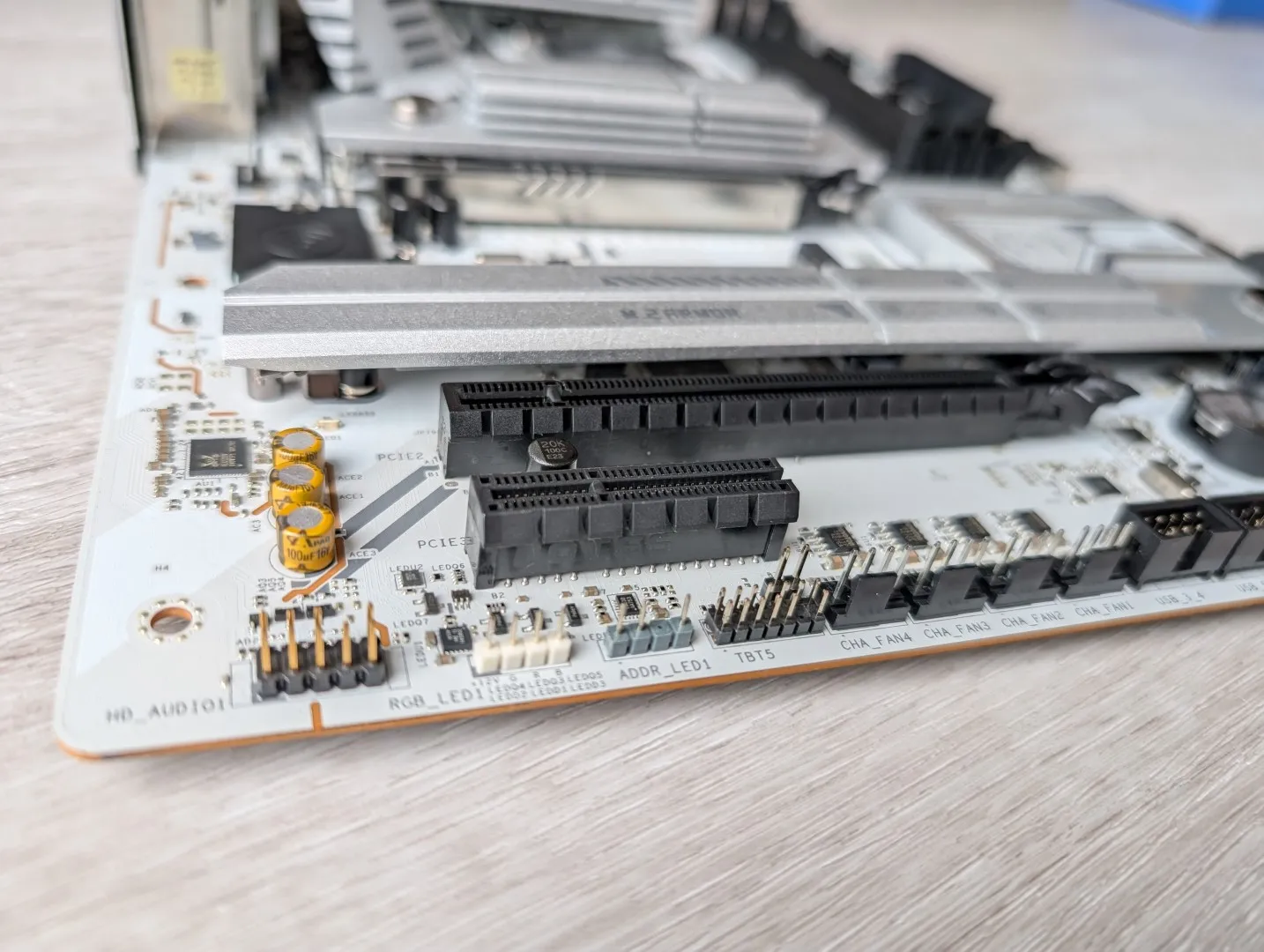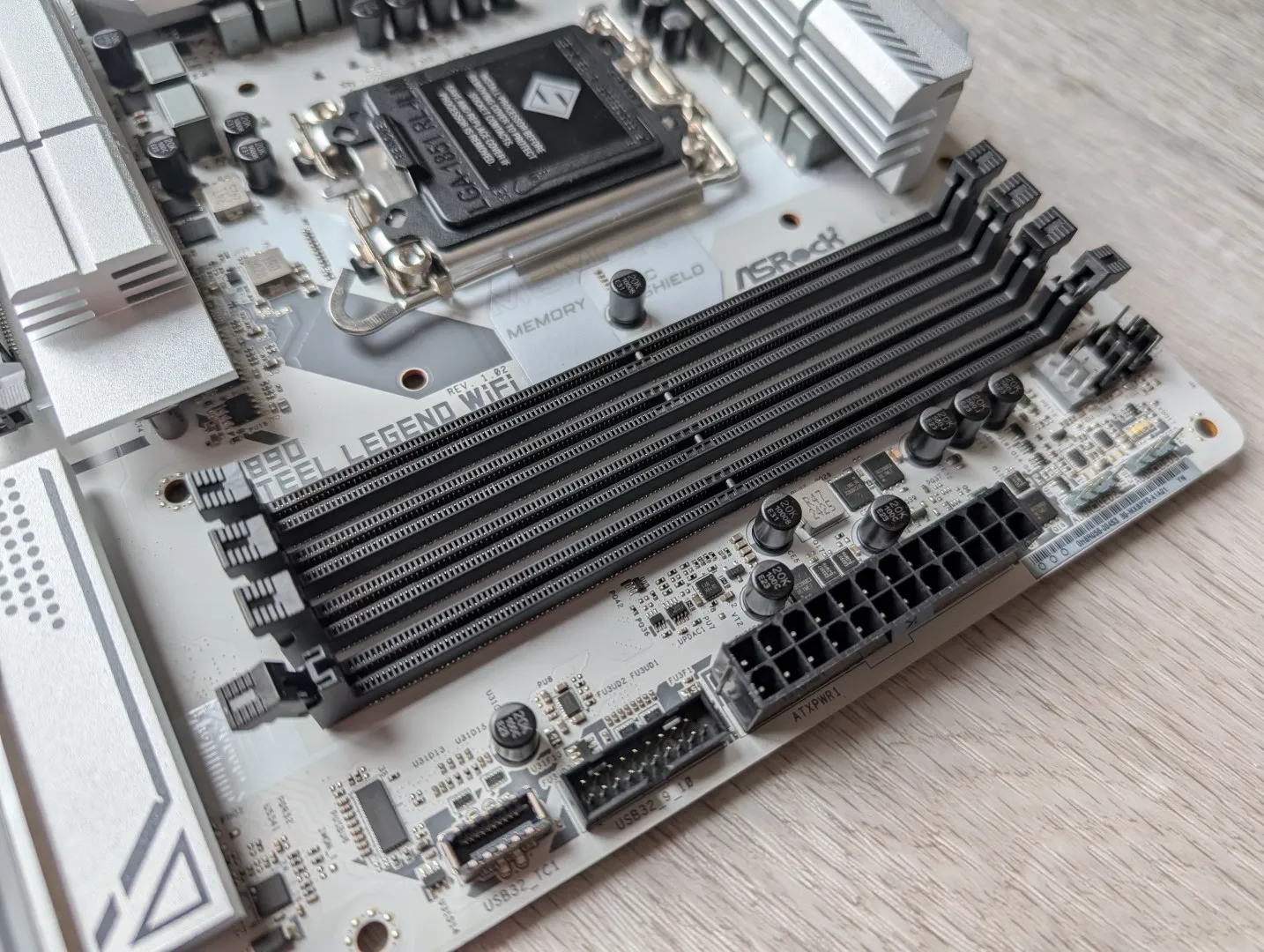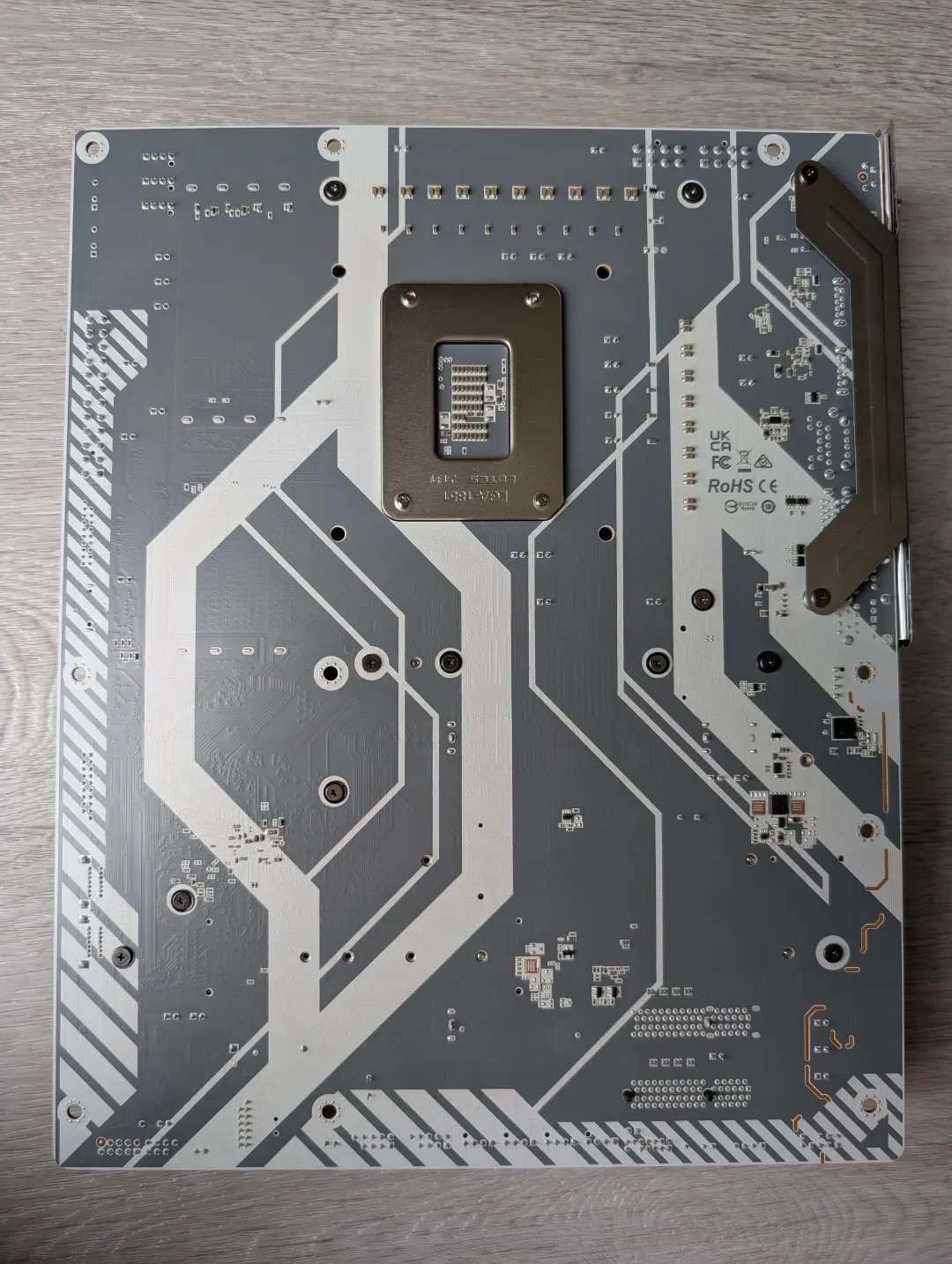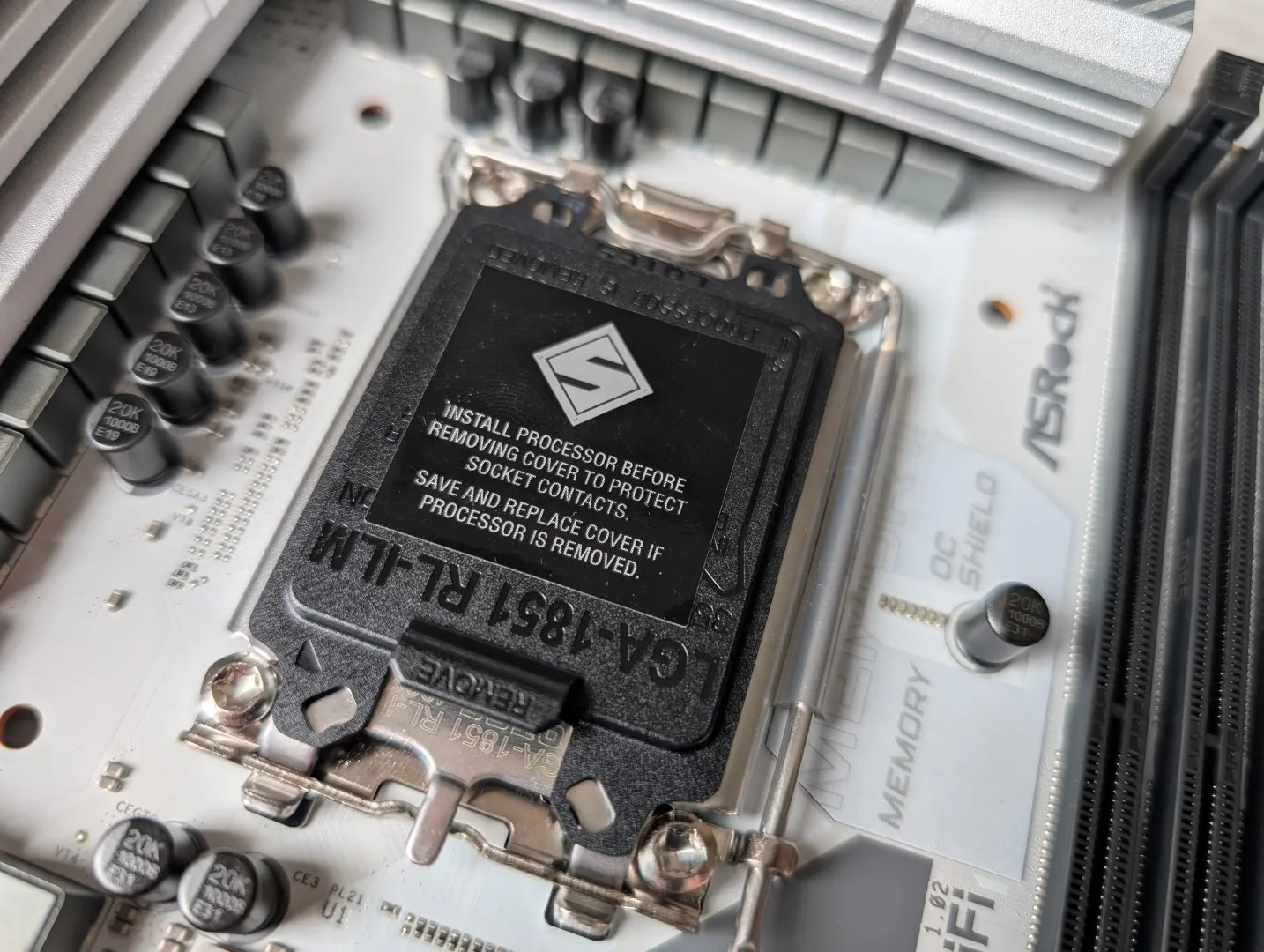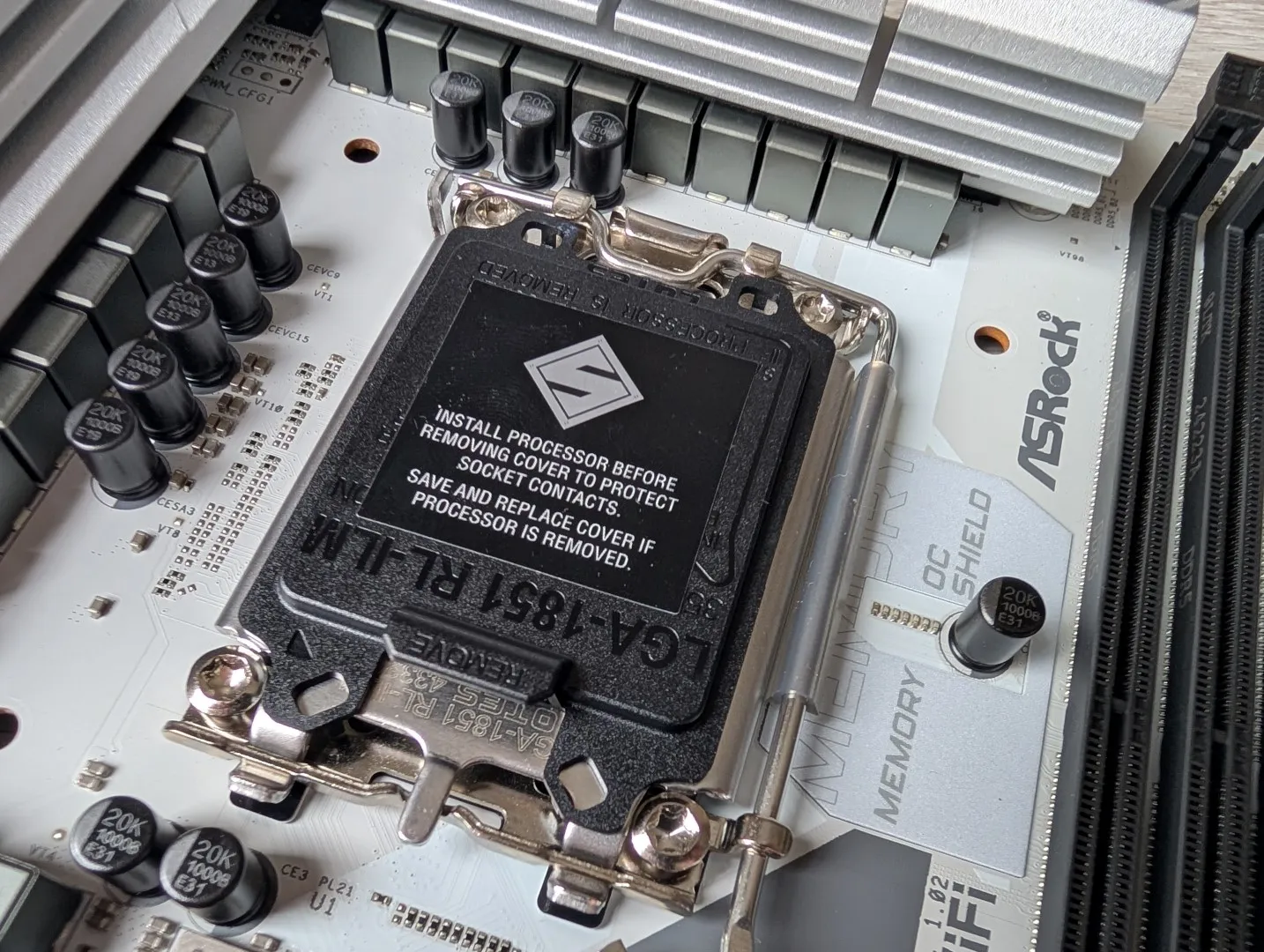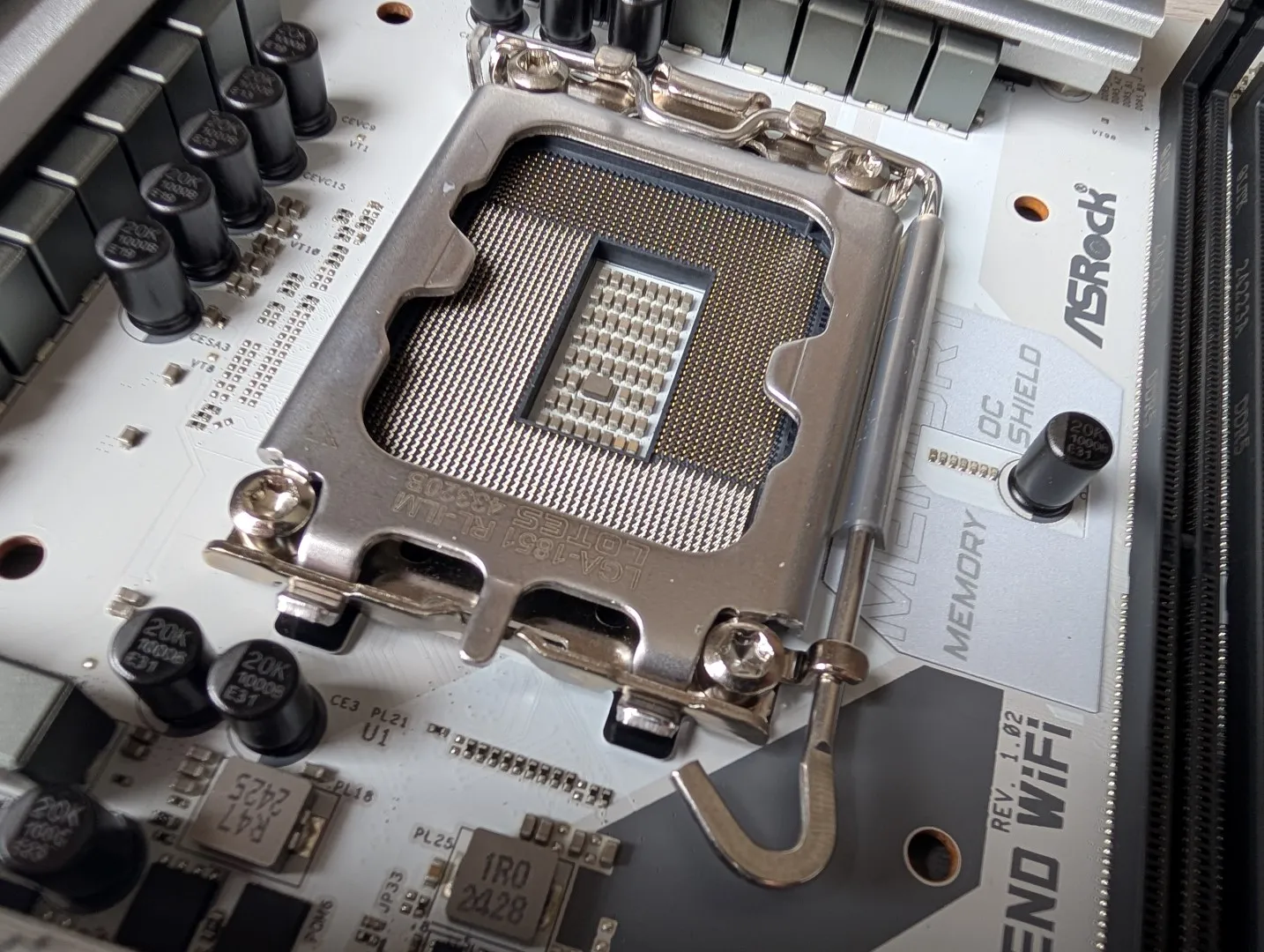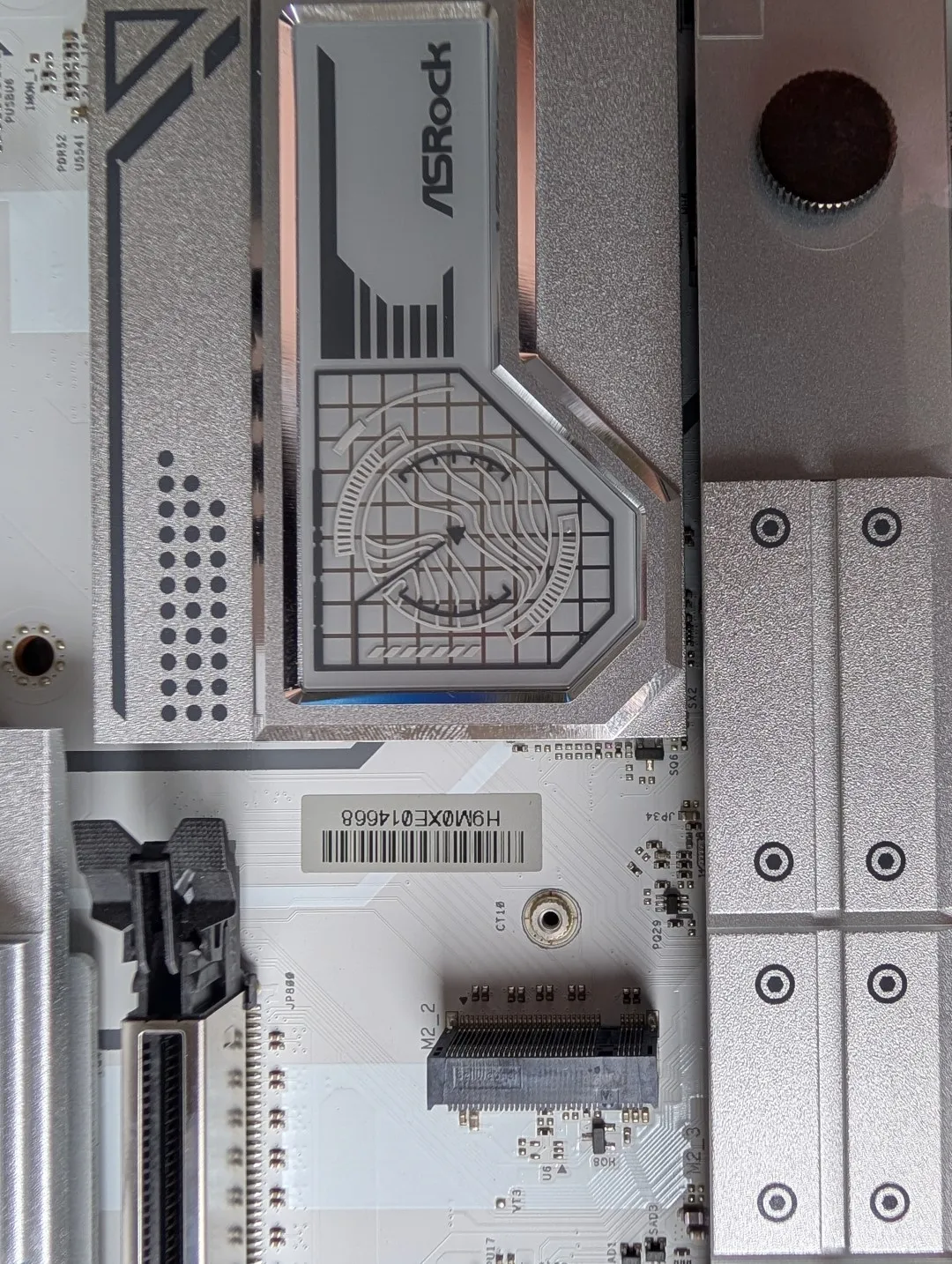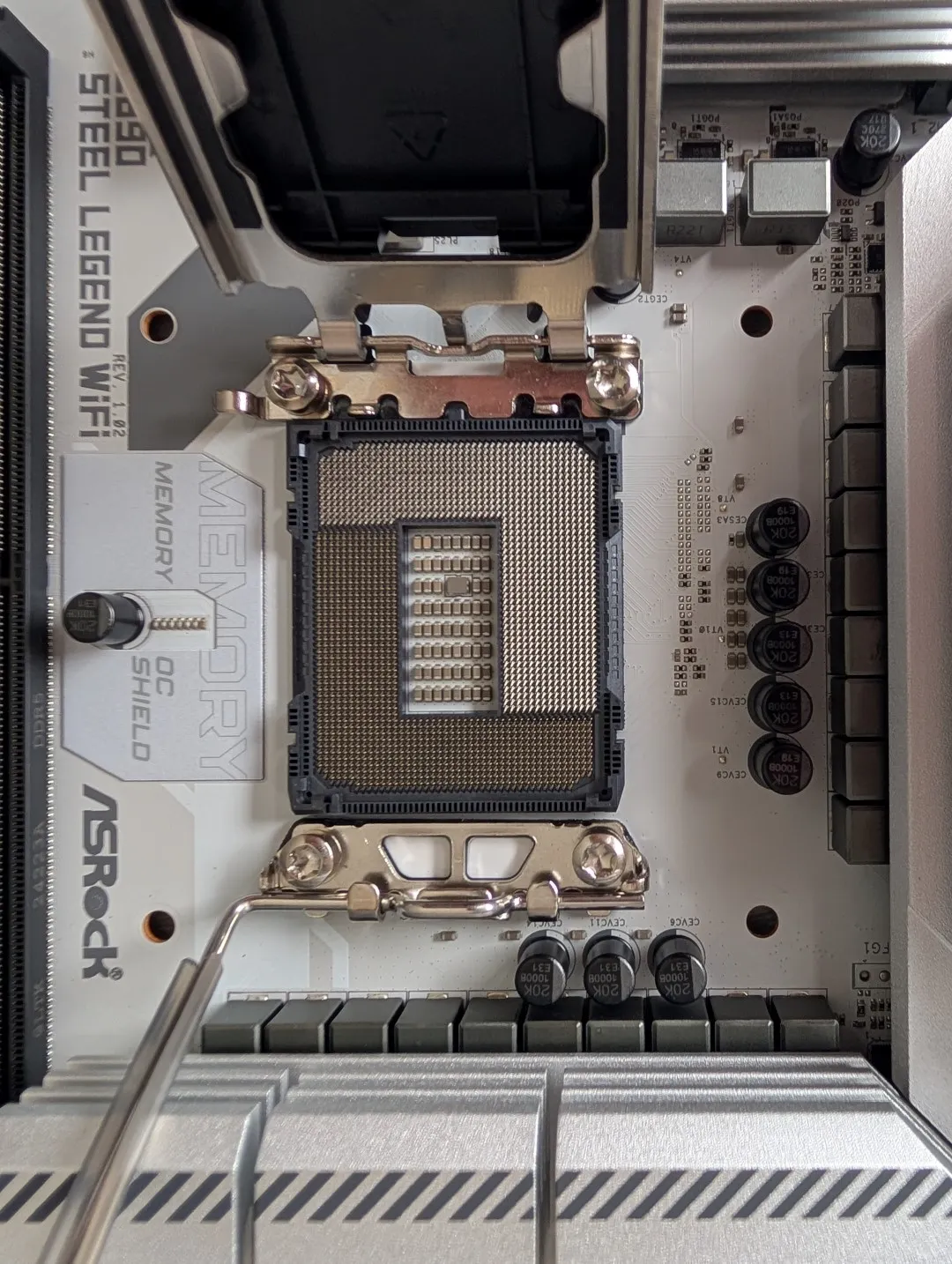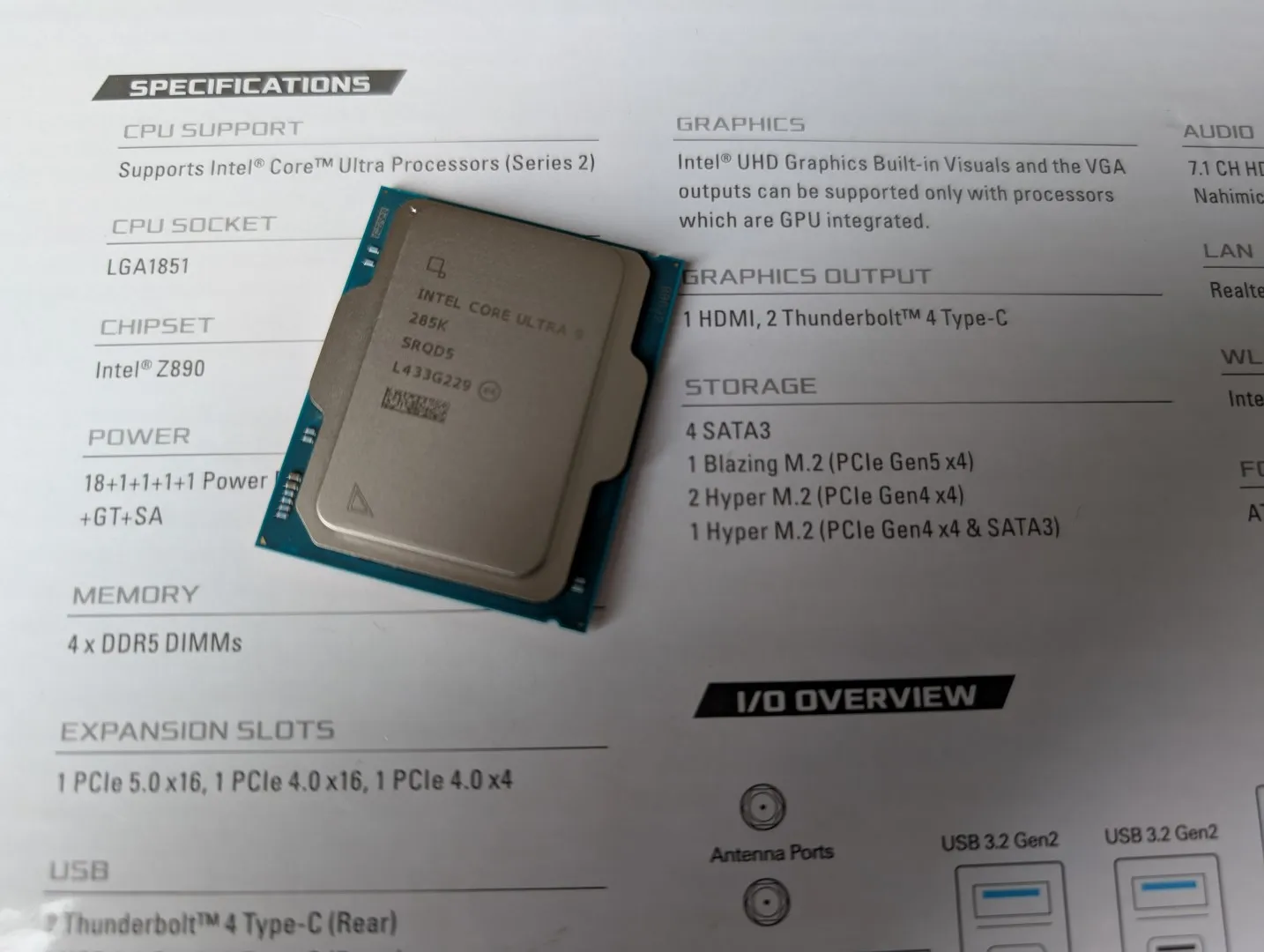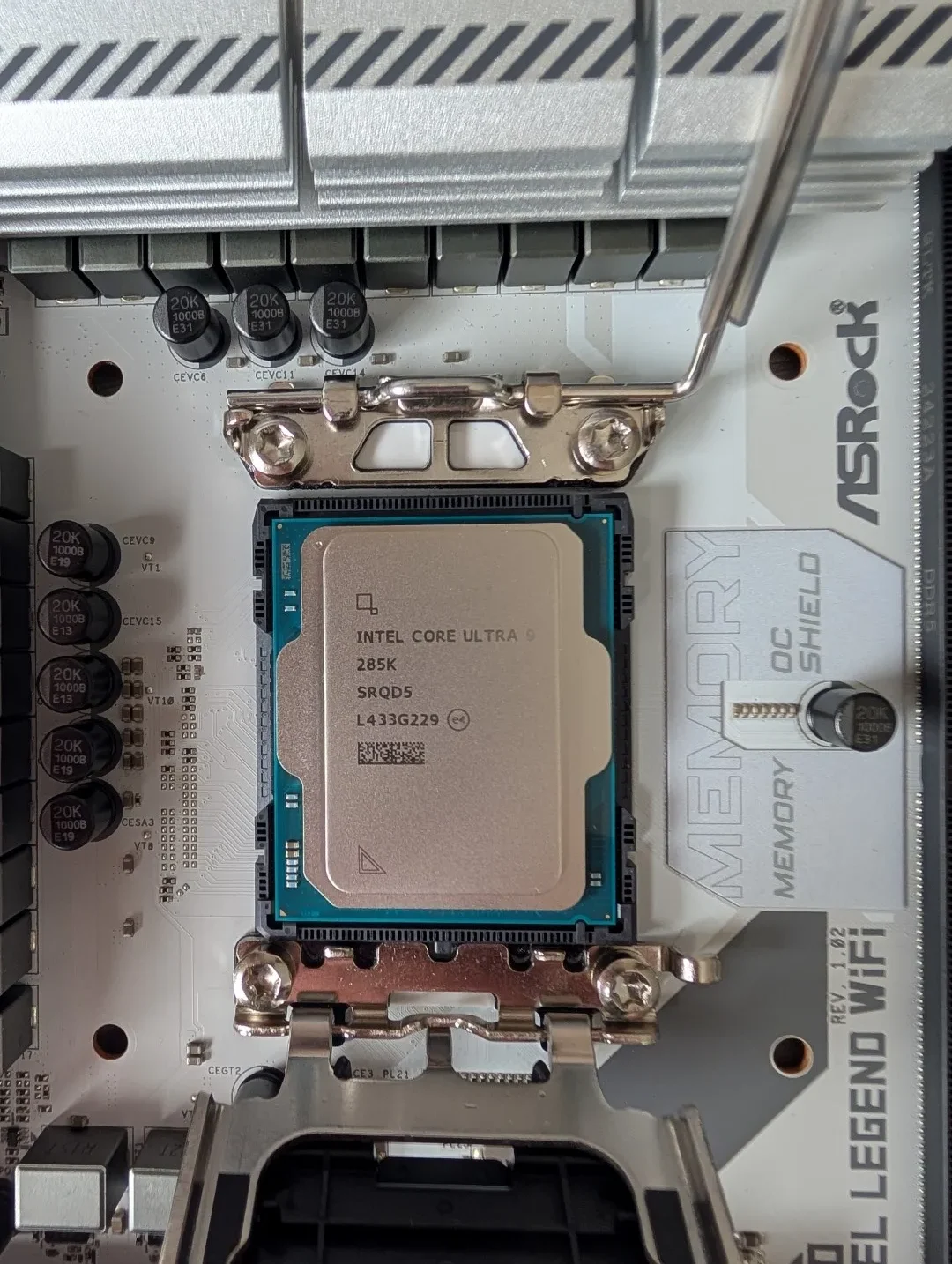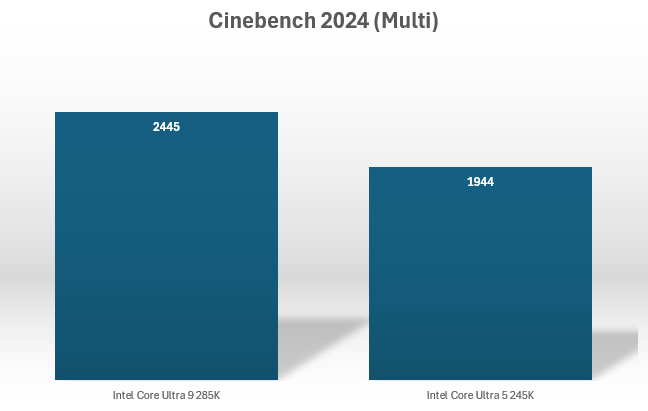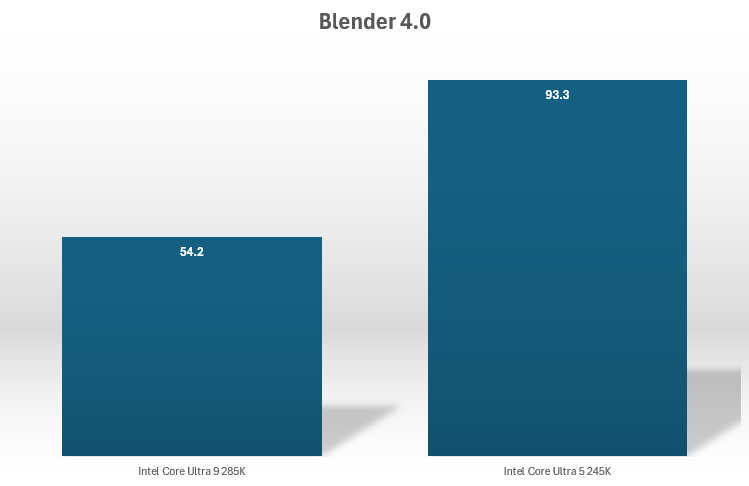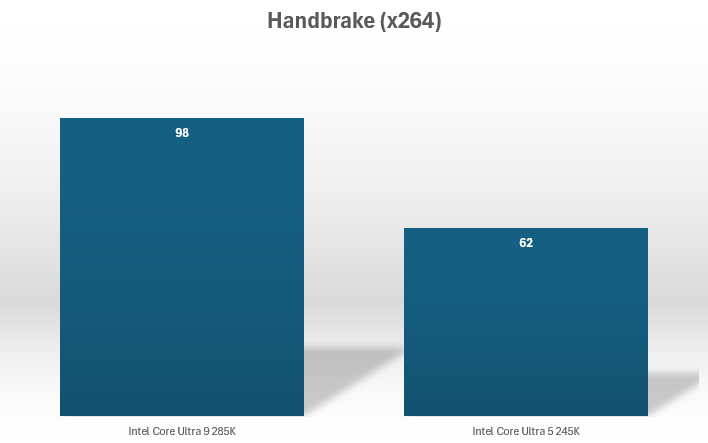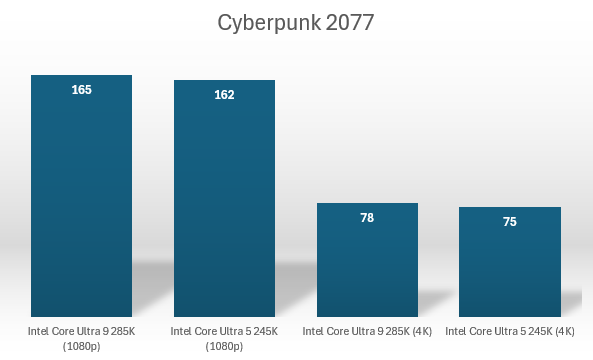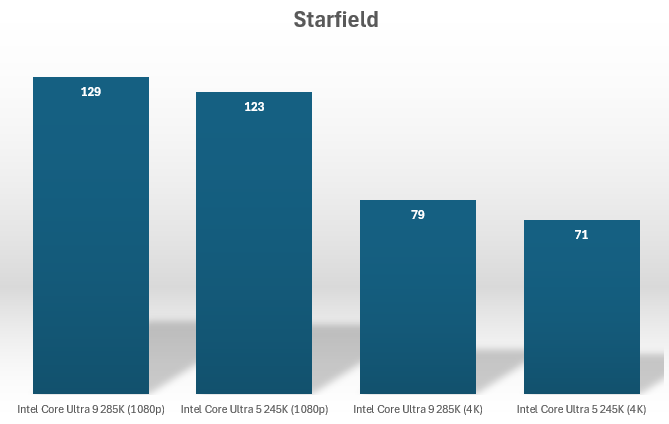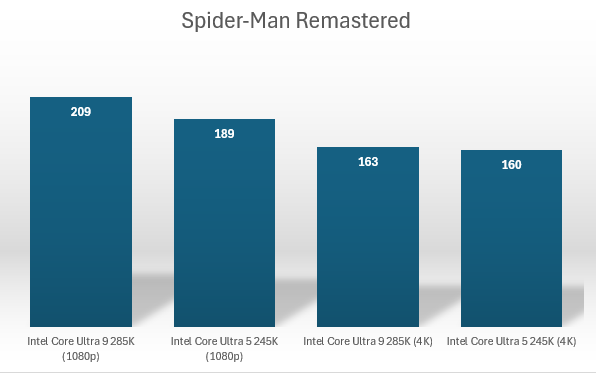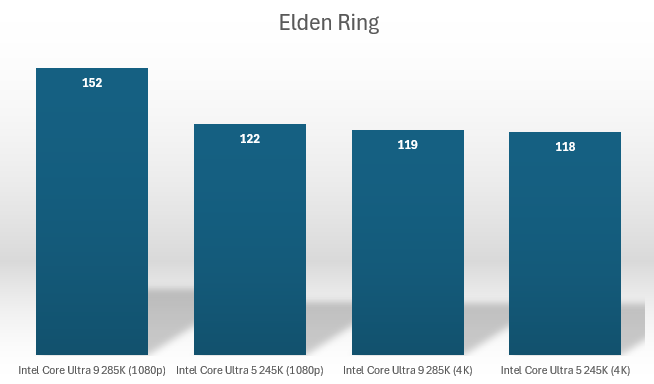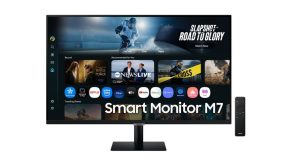ASRock Z890 Steel Legend WiFi Review (motherboard) for the Arrow Lakes!
If you’re looking to make the jump to the new Intel Arrow Lake processors (which were released in October 2024) that use the new LGA1851 socket, ASRock have a variety of motherboards available which support this new architecture. Courtesy of ASRock, we are checking out their ASRock Steel Legend Z890 Wi-Fi which comes with a wealth of impressive features, including outstanding aesthetics which really makes this motherboard standout from its competitors.
ASRock Steel Legend Z890 Wi-Fi Specifications
- Supports Intel® Core™ Ultra Processors (Series 2) (LGA1851)
- 18+1+1+1+1 Power Phase, 80A SPS for VCore+GT+SA
- 4 x DDR5 DIMMs
- Supports Dual Channel, up to 9466+ (OC)
- 1 PCIe 5.0 x16, 1 PCIe 4.0 x16, 1 PCIe 4.0 x4
- Graphics Output Options: 1 HDMI
- 2 Thunderbolt™ 4 Type-C
- Realtek ALC1220 7.1 CH HD Audio Codec
- Nahimic Audio
- 4 SATA3
- 1 Blazing M.2 (PCIe Gen5 x4)
- 2 Hyper M.2 (PCIe Gen4 x4)
- 1 Hyper M.2 (PCIe Gen4 x4 & SATA3)
- 2 Thunderbolt™ 4 Type-C (Rear)
- 1 USB 3.2 Gen2x2 Type-C (Front)
- 2 USB 3.2 Gen2 Type-A (Rear)
- 8 USB 3.2 Gen1 (4 Rear, 4 Front)
- 6 USB 2.0 (2 Rear, 4 Front)
- Realtek 2.5G LAN
- Intel® 802.11be Wi-Fi 7 + Bluetooth
- Supports BIOS Flashback, Memory OC Shield, 20K Caps with 1000uF Capacitance
Additionally the ASRock Steel Legend Z890 Wi-Fi has an Optimised VRM (Voltage Regulator Monitor) Design to assist with overclocking and support lower temperatures. This also supports SPS (Smart Power Stage) technology that monitors temperatures and ensures smoother power to the CPU with a 18+1+1+1+1 power phase design. From a hardware build, it uses a 6-player PCB with 2 ounce copper inner layers to reduce the temperature of the motherboard and its components. For future proofing, it incorporates PCIe Gen5 Blazing M.2 (up to 128GB/s of transfer speeds) plus it supports the latest DDR5 memory, including the ability to over clock via the Intel XMP.
To support PC building, it comes with a M.2 Heatsink “Tool-less” design which makes installing SSD’s super easy with no stress. I also love the XXL M.2 Heatsink that again helps keep the temperature down. Speaking of heatsinks, ASRock use a large aluminium heatsink to help disperse heat to ensure system stability. From a connectivity perspective, the motherboard supports Wi-Fi 7 for higher data throughput, lower latency and multi-link operation.
For wired networking, it has Dragon 2.5Gb/s LAN for high speed bandwidth which is a must for eSports. Another highlight is that it offers builders access to a front panel USB 3.2 Gen2x2 Type-PC port for up to 20GBps of data transfer rates plus Polychrome RGB to bring your new gaming rig to life. So as you can see, the ASRock Steel Legend Z890 Wi-Fi definitely ticks the right boxes for both gamers, streamers and PC enthusiasts.
So let’s talk about the overall build quality! A++ It cannot be faulted as ASRock should be commended on their high quality build that not only feels sturdy but more importantly everything is well placed and accessible. No more broken motherboards or bruised knuckles here.
Besides the aforementioned front USB ports, the motherboard has well placed inputs on the back of your case, including optical out (SPDIF) with the Realtek ALC1220 Codec plus two gold connectors for the included Wi-Fi antennas. The colour coordination is great, however for most, once connected you won’t generally see them again but when you’re putting it all together, it makes your job easy. As you can see below, everything is well positioned plus it contains those high-speed USB and Thunderbolt connections and of course, that 2.5G LAN port.
There are a total of 19-ports.
The board supports DDR5 memory up 9466+ MT/s (OC), with PCIe Slots 1x PCIe 5.0 x16, 1x PCIe 4.0 x16 (supports x4), 1x PCIe 4.0 x4 plus four M.2 slots (1x PCIe 5.0 x4, 3x PCIe 4.0 x4). The SATA ports support 4x 6Gbps and with all these features, the ASRock Steel Legend Z890 Wi-Fi nicely complements the new Intel 15th Generation Arrow Lake processors. With an ATX Form Factor, the motherboard measures at 30.5cm x 24.4cm which gives you plenty of real estate to work on it.
Welcome to the Arrow Lakes…
| Processor | Frequency | Cores / Threads | GPU Cores | NPU |
| Intel Core Ultra 9 285K | 5.7GHz | 24 (8P+16E) | 4 | 13 TOPS |
| Intel Core Ultra 7 265K | 5.5GHz | 20 (8P+12E) | 4 | 13 TOPS |
| Intel Core Ultra 7 265KF | 5.5GHz | 20 (8P+12E) | 0 | 13 TOPS |
| Intel Core Ultra 5 245K | 5.2GHz | 14 (6P+8E) | 4 | 13 TOPS |
| Intel Core Ultra 5 245KF | 5.2GHz | 14 (6P+8E) | 0 | 13 TOPS |
Box Contents
- 2x SATA Data Cables
- 2x ASRock WiFi 2.4/5/6 GHz Antennas
- 1x Thermistor Cable
- 2x velcro straps
- Steel Legend keycap
- ASRock sticker
Unboxing Gallery
Test System
| Motherboard | ASRock Z890 Steel Legend WiFi |
| Memory | Kingston FURY Renegade DDR5 |
| Graphics | AMD RADEON RX 7900 XTX |
| Storage | Samsung 990 PRO M.2 NVMe SSD 2TB |
| Water Cooling | Arctic Liquid Freezer III 360 A-RGB |
| Power Supply | Corsair RMx Series RM1000x 1000W |
| Operating System | Windows 11 Professional (64) #: Fresh install |
Benchmarking
First up is Cinebench 2024, a benchmarking tool developed by Maxon that evaluates your computer’s hardware capabilities, particularly focusing on CPU and GPU performance. It uses scenes from Cinema 4D, a professional 3D modeling and rendering software, to simulate real-world tasks and is widely used across the globe. We tested the multi-core component of Cinebench on both CPUs with the results below:
#: Higher the better
The new architecture and features of the Intel Core Ultra 5 245K and Intel Core Ultra 9 285K can really be seen with Cinebench 2024, with the flagship processor delivering a very high score, even when compared to last year’s Core i9-14900K. As mentioned, this CPU with its AI integration has been designed for improved audio and video processing, and it does deliver in that regard.
Next up is Blender 4.0, an open-source 3D creation suite that is ideal for rendering models. To maximize this application, you need a very fast processor.
#: Lower is better – score in seconds
Again, the Intel Core Ultra 9 285K boasts a faster score than the Core i9-14900K, cementing this new processor as a rendering beast. The mid-range Intel Core Ultra 5 245K is also no slouch, and although its score is lower, it still demonstrates high-end rendering capabilities.
Another useful video tool is HandBrake, a free open-source video transcoder that allows you to convert video from nearly any format. As it provides real-world performance and supports multi-core processors, it makes for a great benchmarking tool. As expected, the Intel Core Ultra 9 285K and the Intel Core Ultra 5 245K outperformed their older 2023 siblings.
Gaming
The Intel Core Ultra 9 285K and the Intel Core Ultra 5 245K provided mixed results for gaming. However with a high-end graphics card, fast memory, and the correct motherboard, both would still be considered gaming processors. However, they did score lower than the “Raptors” counterparts and their AMD competitors. Whether this is caused by software optimization issues or the new chiplet design that potentially causes higher memory latency, as reported by some outlets, we cannot say for sure. However, Intel is aware of these issues, so stay tuned for updates.
Cyberpunk 2077, like Intel, had a buggy launch. However, now that it has been fixed, it makes for the perfect gaming benchmark tool. For the uninitiated, Cyberpunk 2077 is an action role-playing game developed by CD Projekt Red, set in the dystopian future of Night City. Players take on the role of V, a mercenary who accidentally gets imbued with a cybernetic “bio-chip” containing the memories of a legendary rockstar and terrorist named Johnny Silverhand (voiced by Keanu Reeves). Together, they must navigate the challenges of the city.
We tested the processor at full detail at 1080p, achieving respectable frame rates per second (FPS) in excess of 160, making the game very smooth and visually distinct. It also performed well at 4K (3840 x 2160) with full detail, achieving an FPS of 70+.
Next up was Starfield, a science fiction action role-playing game developed by Bethesda Game Studios, the creators of The Elder Scrolls V: Skyrim and Fallout 4. In this game, you play as a member of Constellation, a group of space explorers. Like Cyberpunk 2077, the game worked well on both processors with full detail at 1080p and 4K.
The once PlayStation-exclusive Spider-Man Remastered, developed by Insomniac Games in collaboration with Marvel, is one of the best Spider-Man games to date, boasting exceptional graphics and gameplay. Out of all the games we tested, this game had some of the best frame rates, with stunning attention to detail. New York City has never looked this good in a game before. Both CPUs ran the game very well at 4K, and yes, this game does support ray tracing with impressive scores.
The last game we used for benchmarking was Elden Ring. Elden Ring is an action role-playing game developed by FromSoftware and published by Bandai Namco Entertainment. It was directed by Hidetaka Miyazaki, known for his work on the Dark Souls series, and features worldbuilding by George R. R. Martin. This game does require high system requirements and, while the Core Ultra 9 285K and Core Ultra 5 245K produced high scores, they were not as high as the Raptor range or their AMD competitors.
Final Thoughts
Besides the Intel Core Ultra 9 285K launch hiccups that do impact on gaming (Intel are aware), the ASRock Steel Legend Z890 Wi-Fi motherboard nicely complements these new Arrow Lake processors, particularly from a content and creative design perspective. The overall build and layout is perfect and it supports some of the latest technologies, including DDR5-9466, not to mention dual Thunderbolt 4 ports. Add in a plethora of storage options with appropriate cooling, excellent wireless, networking and audio capabilities and the ASRock Steel Legend Z890 Wi-Fi will definitely keep your new system rocking along nicely for quite a few years and for additional peace of mind, it comes with a 3-year warranty.
Recommended!


